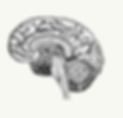Therapy Modalities
We offer a range of services. Our goals are always to meet people where they are at, to understand what they are going through from their worldview, and to guide them toward new ways of feeling and dealing with the world. Along the way, we offer some tools and strategies to help in the short term, while ideally understanding and addressing the core of whatever brings them into therapy. We typically bring in body-centered and neuroscientifically-based therapies to effect change in the session that results in meaningful, lasting changes outside of the session. We are committed to staying up to date with regards to research and best practices. These are a few of the types of psychotherapy we offer, and all of these are integrated with each other to provide a foundation for healing and change.

Neurofeedback
Neurofeedback is a FDA-approved intervention for “relaxation” that has been in use for over 40 years, and that has been successfully applied to a wide range of issues, including anxiety, depression, autism, trauma, attachment issues, addiction, and ADHD, among other issues. The process involves using sensors and a computer to read, digest, and reflect real time brain activity back to the person who is receiving it in a way that they adopt changes to the way their nervous system networks and processes. In short, the process helps us train and change how we function. In my practice I have found that it is immensely useful for reducing experiences of anxiety, stress, depression, sleep, migraine, and tension, and building resiliency and a profound sense of calm. Sometimes this looks like training just a few sessions to make a small shift, and some clients have been training with me upward of 20 sessions. With the type of neurofeedback I practice (known as Infraslow Fluctuation Neurofeedback, or ISF: an approach developed by Mark Smith, https://neurofeedbackservicesny.com/) I find that most people train between 8 and 15 sessions, and that most participants feels better after even one session.


Deep Brain Reorienting (DBR)
Deep Brain Reorienting (DBR) is a comprehensive therapeutic approach for the treatment of trauma, stress, anxiety, dissociation, and other mental health concerns. Many of these conditions, and related ones, have at their origin a shock response in the brainstem. DBR works by setting up conditions where this shock can be processed out of the brain and body. It is a neuroscience- and body-based experiential therapy approach that is effective both in person or over video call.
Shock refers to the activations of a specific brainstem region, called the Locus Coeruleus, and as it is released there are physical feelings associated with it that can be tracked. It can come in a variety of forms, such as temperature changes, tingling, jolts, shudders, pressure behind the eyes, and a few other common forms. In normal circumstances it is a very quick response that amplifies what our brain usually does next: intensifying emotional or defensive responses that alter feelings, behavior, and thoughts, that are incredibly challenging and exhausting to manage with cognitive approaches alone. In DBR, creating space for the shock, by essentially locating it and giving it space to run its course without interrupting it, seemingly results in it having less influence in subsequently shocking contexts. Over the course of DBR sessions, recipients experience changes in the way they experience their senses, their worlds, and ultimately themselves and their relationships. Most people find the processing itself to be gentle, manageable, and relieving, often even after a single session.
Shock responses are developed across the lifespan, and are sensitized by what Dr. Ruth Lanius calls “insults to the senses” - moments when something unexpected and/or painful occurs.
Many things create and reinforce shock. Most obvious may be combat or emergency experiences, and this is what we might imagine with adult onset PTSD. But it often forms in the context of childhood, where abuse and neglect may be part of the environment and may be chronic sources of shock. We also see shock occurring with the absence or unavailability of attuned caregivers, or other chronic environmental stressors. Many things that are considered “normal”, or rather routine, parts of our childhoods seem to be at the heart of a lot of people’s shock. So it can show up in the present day in situations such as when you hear a tone of voice or a look on someone’s face. These may be subtle moments, but to a sensitized nervous system these can be jarring and shocking if they are registered as a painful abandonment or rejection. Because this is happening at the level of sensory integration, shock may also show up as an enlarged startle response or as hearing sensitivities. It is happening before we can form a cognitive thought, so it is worth noting that this can show up whether or not you can rationalize how you respond.
It is possible to feel differently. Clearing shock creates a different reality.
DBR is an evidence-based treatment for PTSD, with a significant effect size found after eight sessions of treatment relative to the control group. Significantly beneficial changes were found in scores for PTSD, Dissociation, Depression, and Physical Symptoms. fMRI scans pre- to post- treatment showed an increase of both vertical and horizontal integration of functional networks in the brain, and these changes translate to being more connected internally while working less hard to manage how one feels.
These findings in controlled research settings are consistent with the experiences of clinicians and their clients all over the world who have felt a fundamental shift since using DBR. Other arousal-mediated issues, such as sleep, OCD, and neurodiversity have been found to be relieved as well, and future studies may verify these clinical findings.
If you are curious about DBR, many people find this video series helpful: https://www.youtube.com/watch?v=_UQwbi23JmI
Also feel free to schedule a consultation with Kyle if you would like to know more about it.

EMDR
According to the EMDR International Association (https://www.emdria.org/), “Eye Movement Desensitization and Reprocessing (EMDR) therapy is an extensively researched, effective psychotherapy method proven to help people recover from trauma and other distressing life experiences, including PTSD, anxiety, depression, and panic disorders.” Clients often report significant, rapid, and permanent shifts from this process.
Equine Assisted Psycotherapy
Equine assisted psychotherapy (EAP), involves partnering with horses in creative ways to support the therapeutic process. Following what is said about Gestalt therapy earlier, EAP entails a creative link between the person and the horse that facilitates learning, relationship, boundaries, embodiment, and integrative change. Additionally, there is a growing body of research suggesting the profound physiological benefits of spending safe, structured time with the horses. We have an incredible herd of four horses to work with here, and each has a very different history and personality.
Mounted Equine Processing is a specific tool within the broad range of tasks we can focus on in equine-assisted psychotherapy. It works by being seated in a saddle on the horse, focusing on a specific feeling or issue, holding this awareness while the horse is walking and allowing your body to process it in a natural and safe way. If any part of this is uncomfortable, much care is taken to slow things down and stay with whatever feels manageable. The result is often a feeling of release of emotion and tension, as well as relief (along with some sleepiness and hunger as our nervous system resets). This process draws on elements of other therapies, but the combination is uniquely its own experience.



Gestalt
Gestalt psychotherapy can probably be best described as “right hemisphere therapy”, in that it involves tapping into our intuitive, creative, and innate processing that verbal/cognitive approaches often struggle to access. Exploring our relational, somatic, emotional, and existential experience of ourselves and each other in a playful, organic process can be a profound way to navigate and renegotiate issues we’ve been stuck on. It is a roadmap for relating, processing, and being.